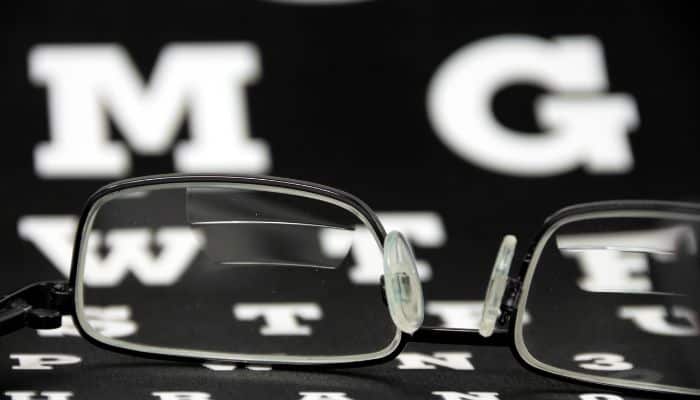Single-vision glasses (or more specifically, single-vision lenses) are designed to correct vision in one specific viewing distance – near or far.
They are the most common type of prescription glasses and are typically prescribed for people with nearsightedness or farsightedness.

The optical prescription strength is evenly distributed across the entire lens surface.
This means that whether you look through the top, middle, or bottom of the lens, the visual correction remains the same.
Most over-the-counter reading glasses are a type of single-vision glasses (as opposed to bifocal reading glasses).
How Do I Know If Single-Vision Glasses Are For Me?

If you’ve been diagnosed with a refractive error and need prescription glasses, single-vision glasses are likely the best solution for your needs.
When you’re nearsighted, your glasses prescription will have a negative (-) number in the Sphere box indicating that your distance vision is blurry and needs correction.
If you’re farsighted, the prescription will have a positive (+) number that indicates the need for corrective lenses to help you see up close.
Single vision lenses are typically the most cost-effective option and are often the first type of corrective eyeglasses prescribed.
However, if you have more than one refractive error or need a multifocal lens to correct more than one vision issue, then single-vision glasses may not be the best solution for your needs.
Your doctor can help you decide which type of lens is right for you.
What Other Kinds Of Glasses Lenses Are There?
Bifocal Glasses
Bifocals use two different prescriptions in the same lens, one for near-vision and one for distance-viewing. Bifocal lenses have a distinct line that divides the two prescriptions.

Trifocal Glasses
Trifocals have three different prescription corrections throughout the lens – near, intermediate, and far.
The top portion of the lens is designed for distance-viewing, the middle section corrects for intermediate, and the bottom portion for near-vision.

There are two distinct lines on trifocal lenses where the change between prescriptions takes place.
Progressive Glasses
Progressive lenses are similar to trifocals in that they contain multiple prescriptions. However, they don’t have visible lines separating the different areas of vision correction.
Instead, these segments gradually transition from one prescription area to another. This gives the wearer a more natural, seamless transition between power corrections.